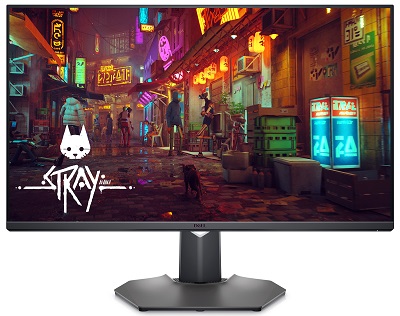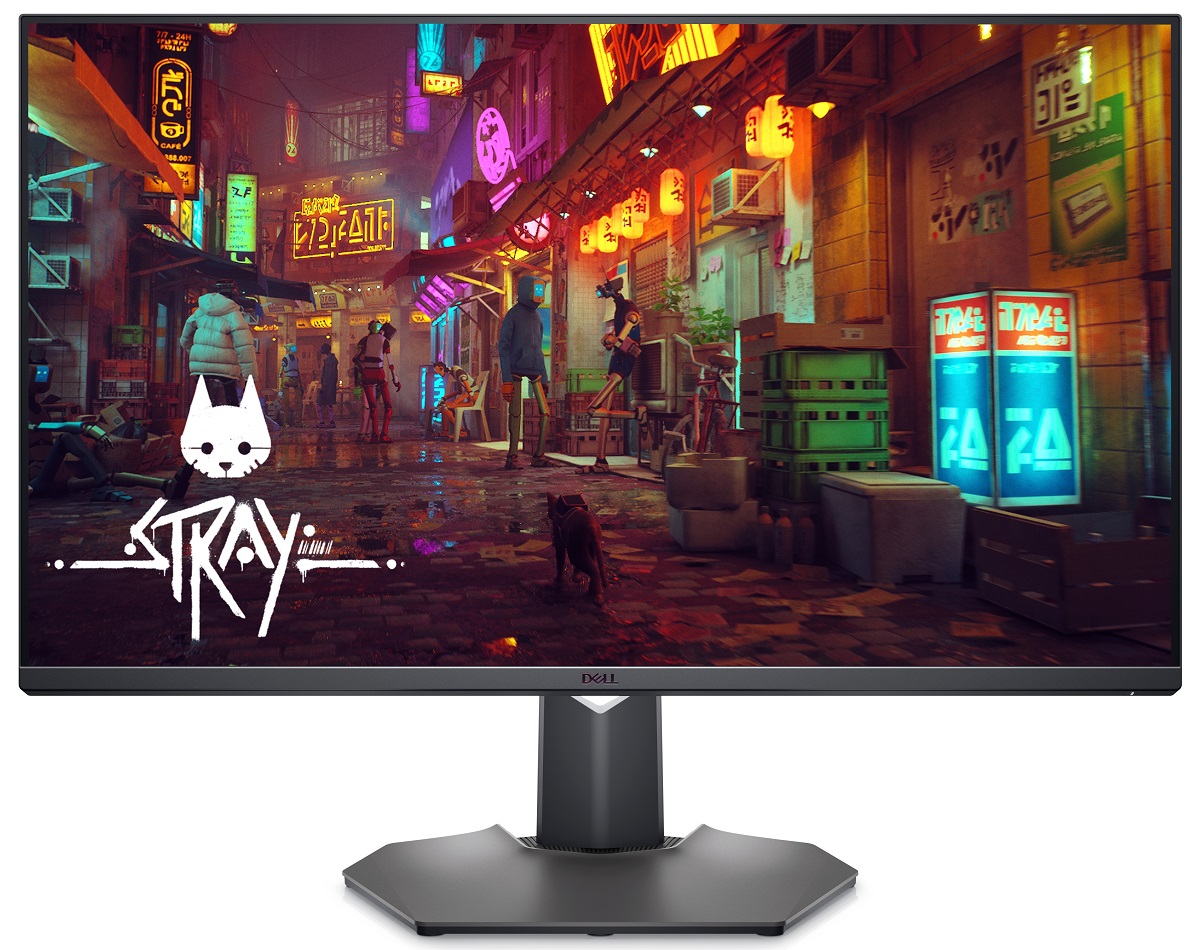Dell G3223Q 144Hz 4K UHD IPS with HDMI 2.1
As an Amazon Associate and Newegg Affiliate I earn from qualifying purchases made using the “Buy” button at the bottom of this post. Where possible, you'll be redirected to your nearest store. Further information on supporting our work.The ~32″ screen size is often considered something of a ‘sweet spot’ for the 3840 x 2160 (‘4K’ UHD) resolution. This is made even more attractive when support for a high refresh rate is thrown into the mix, particularly for gamers. The Dell G3223Q is built with this in mind, with HDMI 2.1 included to allow a ‘4K’ UHD 120Hz signal on modern games consoles like the PS5 and Xbox Series X. The styling is similar to other recent members of the ‘G’ series, with a polygonal stand base and extensive use of dark matte plastics. The central brand logo is shiny silver with a slight ‘rainbow’ tint when light strikes it, for a bit of visual interest. The OSD (On Screen Display) is controlled by buttons and a joystick at the rear of the screen, running down the right side as viewed from the front.
A 32″ IPS-type panel is used, with 3840 x 2160 (‘4K’ UHD) resolution and 144Hz refresh rate. More specifically the AUO M320QAN02.C AHVA (Advanced Hyper-Viewing Angle) panel. Adaptive-Sync is also supported, including AMD FreeSync Premium Pro, with a 48 – 144Hz VRR range plus LFC. Other aspects of note include a 1000:1 static contrast ratio, 178°/178° viewing angles and 10-bit colour support (8-bit + FRC). A light to very light matte anti-glare screen surface is used. A flicker-free WLED backlight provides a typical maximum luminance of 400 cd/m² (600 cd/m²+ HDR peak) and 95% DCI-P3 colour gamut. The monitor includes ‘ComfortView Plus’, which indicates the monitor offers reduced energetic blue light emission to potentially aid viewing comfort (TÜV Rheinland certified hardware solution). Additionally, a ‘ComfortView’ Low Blue Light (LBL) setting is included to promote a more relaxing viewing experience. The monitor also includes an sRGB emulation setting, Uniformity Compensation (UC) and a range of gamma settings. An average DeltaE <2 for sRGB and <3 for DCI-P3 is claimed.
The monitor responds to HDR10 content in a fairly dynamic way, with VESA DisplayHDR 600 support included. This allows 10-bit colour processing to be used, with the fairly generous gamut potentially put to good use. It also allows fairly high brightness output (600 cd/m² peak specified) and requires the use of at least some degree of local dimming to provide a situational edge to contrast. 8 dimming zones are included in this case. A 1ms grey to grey response time is specified, though as usual you shouldn’t pay too much attention to this figure. The monitor includes ventilation slats at the rear to aid passive cooling, whilst the stand attaches centrally via a quick-release mechanism and offers tilt, swivel and height adjustment. It can be removed to reveal 100 x 100mm VESA holes for alternative mounting. The ports face downwards and include; AC power input (internal power converter), 2 HDMI 2.1 ports, DP 1.4 and a USB upstream port. Outside the main port area, facing downwards and within easy reach towards the left side of the screen (viewed from the front), there are 2 USB 3.2 Gen1 ports and a 3.5mm headphone jack. PiP/PbP is supported.

Further information can be found on the manufacturer’s website with some additional thoughts shared in this post on our forum. The monitor is listed for ~$1150 USD.


